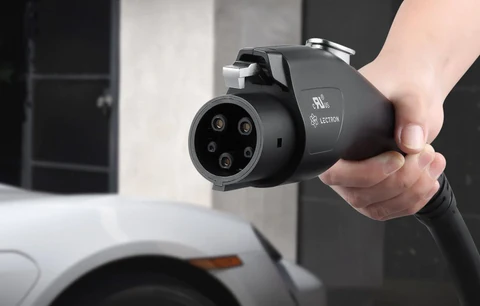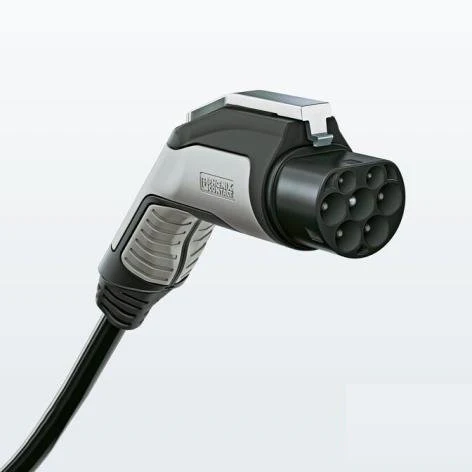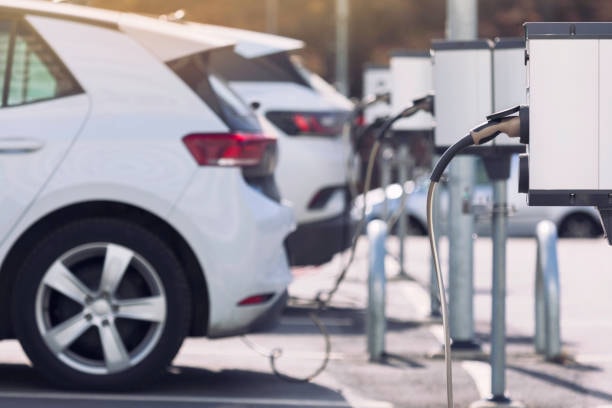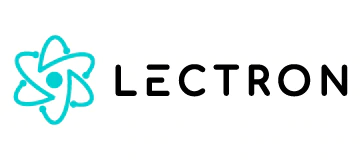
How Fast Does a Level 2 Charger Charge Your EV?
A Level 2 charger is an electric vehicle (EV) charging station that operates at a higher power level than a standard Level 1 charger. It requires a 240-volt power source and a dedicated charging unit, typically found in homes, workplaces, and public charging stations. This setup allows for a significantly faster charging rate compared to Level 1 chargers, making Level 2 chargers a preferred choice for most EV owners.

Understanding the charging speed of a Level 2 charger is crucial for efficient EV usage. Knowing how long it takes to charge your vehicle helps plan daily commutes, long trips, and ensures that the EV is ready when needed. Additionally, understanding charging speed helps in selecting the right charging equipment and optimizing the overall charging experience.
Factors Affecting Charging Speed
From the battery size to the type of EV charger, several factors can affect how fast or slow you can fill up your electric car.
Power Output of the Charger
The power output of a Level 2 charger significantly influences charging speed. Typically, Level 2 chargers deliver between 3.3 kW and 22 kW of power. Higher power outputs result in faster charging times, allowing more miles to be added to the EV’s range per hour of charging.
Electric Vehicle (EV) Battery Capacity
The capacity of an EV’s battery, measured in kilowatt-hours (kWh), also affects charging speed. Larger batteries take longer to charge fully, even with higher power outputs. For example, a 40 kWh battery will get full charge faster than a 100 kWh battery using the same Level 2 charger.
Different Levels of Charging
Charging levels are categorized as Level 1, Level 2, and DC fast charging (Level 3). Each level offers different power outputs and charging speeds. Level 2 charging strikes a balance between the slow Level 1 chargers and the rapid DC fast chargers, making it suitable for both residential and public use.
EV Charging Equipment
The type and quality of charging equipment, including cables and connectors, impact charging efficiency. High-quality equipment ensures better power transfer and reduces charging time.
Understanding Level 2 Charging
Level 2 charging uses alternating current from a 240-volt AC power supply, which is then converted to DC power by the EV’s onboard charger. This conversion allows for more efficient and faster charging compared to Level 1 chargers that use a standard 120-volt household outlet.
Level 2 chargers typically provide power outputs ranging from 3.3 kW to 22 kW. This translates to approximately 20-60 miles of range per hour of charging, depending on the EV and charger specifications.
Comparison with Other Charging Levels
-
Level 1 Charging: Uses a standard 120-volt outlet, providing 3-5 miles of range per hour. Suitable for overnight home charging but slow for daily use.
-
DC Fast Charging: A DC fast charger provides 50-350 kW of power, delivering up to 200 miles of range in about 30 minutes. Ideal for long trips and quick top-ups but more expensive and less common than Level 2 chargers.
Charging Speed of Level 2 Chargers
A Level 2 charger typically adds 20-60 miles of range per hour of charging, depending on the power output and the specific electric car model. This is a significant improvement over Level 1 chargers and sufficient for most daily driving needs.
Factors Influencing Charging Speed
-
Charger Power Output: Higher power outputs result in faster charging.
-
Battery Capacity: Larger batteries take longer to charge.
-
State of Charge: Charging slows down as the vehicle's battery approaches full capacity.
-
Environmental Conditions: Extreme temperatures can affect charging efficiency.
Larger battery capacities mean longer charging times. For example, charging a 60 kWh battery from empty to full with a 7.2 kW Level 2 charger takes about 8-9 hours, while a 20 kWh battery would take about 2-3 hours under the same conditions.
Level 2 Connectors and Plugs
Level 2 EV chargers use standardized connectors to ensure compatibility across different EV models. These connectors play a crucial role in the interoperability of charging infrastructure, allowing various electric vehicles to charge at different stations seamlessly. The most common Level 2 connectors include:
SAE J1772 (Type 1)

The SAE J1772 connector, commonly referred to as Type 1, is the standard Level 2 charging connector used in North America. It is designed for use with AC Level 2 chargers and is compatible with nearly all electric vehicles sold in the United States and Canada, except for Tesla vehicles.
-
Power Output: The J1772 connector can deliver up to 19.2 kW of power, though most residential and public chargers provide between 3.3 kW and 7.2 kW.
-
Design: The connector features a five-pin design with two power pins, a ground pin, and two communication pins that allow the EV and charger to communicate, ensuring safe and efficient charging.
-
Adoption: Due to its widespread adoption, the J1772 connector is found in most public charging stations across North America, making it a versatile and reliable choice for EV owners.
Mennekes (Type 2)

The Mennekes connector, also known as Type 2, is the standard Level 2 charging connector used in Europe, and it is gaining popularity in other regions such as Australia, parts of the Middle East, and Africa.
-
Power Output: Type 2 connectors support a range of power outputs from 3.7 kW (single-phase, 16 Amp) up to 22 kW (three-phase, 32 Amp). The flexibility in power output allows for varying charging speeds suitable for different scenarios.
-
Design: The Mennekes connector has a unique design with seven pins—two for power, one for ground, and four for communication. The connector’s robust design ensures a secure connection between the EV and the charger.
-
Adoption: The Type 2 connector is standard across European Union countries, making it the most common EV charging interface in Europe. It is compatible with both single-phase and three-phase AC power, allowing for faster and more efficient charging.
GB/T

The GB/T connector is the standard used in China for electric vehicle charging. It was developed to meet the specific requirements and standards of the Chinese market.
-
Power Output: GB/T connectors typically provide up to 7.4 kW of power with a single-phase input, though higher power outputs are also supported in certain configurations.
-
Design: The connector design includes both male and female configurations, differing from the European Type 2 setup. This design ensures compatibility with the specific signaling and safety requirements mandated by Chinese standards.
-
Adoption: Given the rapid growth of the EV market in China, the GB/T standard is widely adopted, and charging infrastructure across the country supports this connector, ensuring comprehensive coverage for EV users.
Tesla NACS (North American Charging Standard)

Tesla utilizes its proprietary connector, known as the North American Charging Standard (NACS), for Level 2 charging in North America. This connector is unique to Tesla vehicles but can be used by other EVs with the appropriate adapters.
-
Power Output: The NACS connector supports both AC Level 2 and DC fast charging. For Level 2 charging, it typically provides up to 19.2 kW of power, similar to the J1772 standard.
-
Design: The NACS connector is sleek and compact, designed to be user-friendly and easy to handle. It combines AC and DC charging capabilities in a single port, simplifying the charging process for Tesla owners.
-
Adoption: While proprietary to Tesla, the NACS connector’s widespread presence in Tesla Supercharger networks and Destination Chargers makes it a significant part of the charging infrastructure in North America. Adapters are available to allow other EVs to use Tesla charging stations, enhancing interoperability.
Public Level 2 Charging Stations
Public Level 2 chargers are widely available in urban areas, shopping centers, workplaces, and other public locations. They provide a convenient option for EV drivers to fully charge their vehicles while running errands or at work. Many cities and businesses install these chargers to support the growing number of EVs, promoting sustainable transportation. However, accessibility can vary, and in densely populated areas, chargers may be occupied frequently.

Charging time at public Level 2 stations depends on the charger’s power output and the EV’s battery capacity. Typically, a Level 2 charger adds about 20-60 miles of range per hour. For example, a 60 kWh battery charging at a 7.2 kW Level 2 charger gains approximately 50 miles of range per hour, making it suitable for longer stops or overnight charging. This charging speed allows EVs to be fully charged within 8-10 hours if the battery is completely empty.
Considerations for EV Drivers Using Public Chargers
Cost: Public Level 2 charging may incur fees, which vary by location and provider. Some stations charge by the hour, while others charge based on the electricity consumed (kWh). Free charging options may also be available, often subsidized by businesses or local governments.
Availability: Public charging stations can often be occupied, especially during peak hours. Using mobile apps to check real-time availability and reserving a spot in advance can help avoid delays.
Charging Speed: Ensure the chosen charger is compatible with your EV for optimal charging speeds. Some public chargers offer higher power output, reducing charging time compared to lower-powered units.
Accessibility: Consider the location and ease of access to the charging station. Look for chargers in safe, well-lit areas, especially for overnight charging. Some charging stations may be located in premium parking spots, which can affect convenience.
Connector Compatibility: Most public Level 2 chargers use the J1772 connector, compatible with nearly all non-Tesla EVs in North America. Tesla drivers may need an adapter to use these chargers, and non-Tesla EV drivers may require an adapter to use Tesla’s proprietary chargers.
FAQs
-
No, Level 2 charging is not bad for EVs. It is designed for regular use and provides a good balance between charging speed and battery health. Frequent use of DC fast chargers, however, can lead to faster battery degradation over time.
-
Level 3 chargers, also known as DC fast chargers, can add up to 200 miles of range in about 30 minutes, depending on the specific charger and EV model.
-
A Level 2 charger typically adds an estimated range of 20-60 miles of range per hour, depending on the charger’s power output and the EV’s battery capacity.
